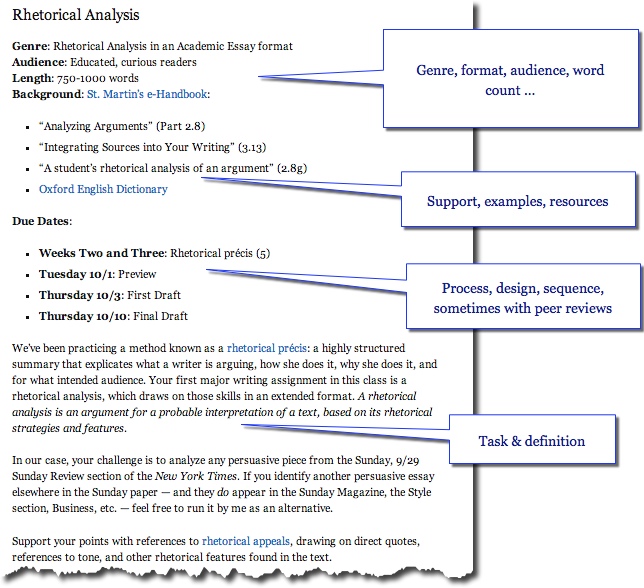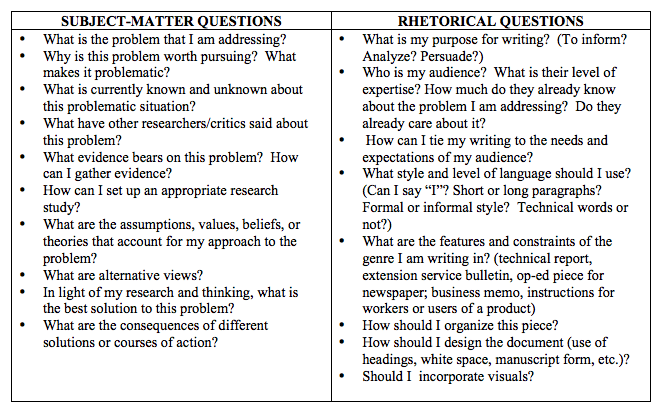More recent research, conducted jointly by the National Survey of Student Engagement (NSSE) and the Council of Writing Program Administrators (WPA), has shown that for promoting engagement and deep learning, the number of writing assignments in a course may not be as important as the design of the writing assignments themselves.
Good assignments, this research has shown, give students opportunities to receive early feedback on their work, encourage meaning-making, and clearly explain the instructor’s expectations and purpose.
— John C. Bean, Engaging Ideas: The Professor’s Guide to Integrating Writing, Critical Thinking, and Active Learning in the Classroom
From Chapter 5 of Bean’s Engaging Ideas:
- Before you create an assignment, consider the kind of writing you want students to produce. What do you want them to accomplish through this writing project? Do you want them to analyze a problem, to persuade readers, to practice or to demonstrate writing conventions in a particular discipline? Do you want them to explore an issue? To engage in truth seeking? How does the assignment support the learning goals central to your course?
- Consider what thinking and writing processes you want students to undertake. How will your assignment create a rhetorical situation—audience, purpose, context, role of student writer, format or genre, and other parameters to guide students as they write?
- How might you design and sequence steps to move students through the process of the assignment and what kinds of informal writing assignments or activities will you use to support students as they work?
- Now that you’ve thought about the purpose and scope of the writing assignment, create a written document for students describing what you want them to do. A strong writing assignment handout includes the following:
- Task: What issue, question, or problem will students address in their writing? What is the purpose of the writing? In what form/genre should it be presented? What are the formatting requirements for this writing task?
- Audience: Who is the audience for students’ writing? You, the teacher? Their peers? Specialists in the field? A nonspecialist, general audience?
- Support for Writing: What support will students have as they write? Will you provide feedback on drafts? Will they read each other’s drafts? Will they be able to revise? Will you hold individual conferences? Will they complete any writing activities in class?
- Criteria: Explain the learning goals of the assignment and on what basis it will be evaluated.
- Make time in class to distribute and discuss your assignment. If possible, provide a model or models of what a finished product might look like.
Critical Thinking for Writers via ill-structured problems, contemporary issues, and rhetorical questions:
Resources
UCWbL/Writing Center: Faculty Development, including assignment design
DePaul Teaching Commons: Assignment Design
From a recent CCC review essay:
The two books reviewed here, Everyday Genres by Mary Soliday and Toward a Composition Made Whole by Jody Shipka, are, in simplest terms, seeking to guide us on how to design good writing assignments. Soliday argues for genre-based, socially situated writing assignments in disciplines other than writing studies, and Shipka argues for assignments in writing studies designed to encompass forms of communication and rhetorical problem solving other than academic writing. The design of writing assignments is a subject under-researched and under-discussed in English and writing studies today.
Beaufort, Anne. “The Matter of Assignments in Writing Classes and Beyond.” College English via DePaul Library.


